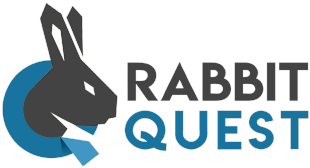Overcoming obstacles: Boosting participation in your health initiatives
Why your efforts in health initiatives matter now more than ever. If you're managing between 20 to 500 employees and striving to launch successful health initiatives, this blog is your go-to resource. Wondering why some employees are hesitant to join? We're here to explore and dismantle the top three barriers to participation in your health initiatives, providing practical, light-hearted advice to transform your workforce into enthusiastic participants.
Time to read: 5 minutes
Barrier 1: Lack of awareness and understanding
Often, employees are not fully aware of the health initiatives available to them or don't understand their benefits. This lack of awareness can stem from insufficient communication or miscommunication about the program's details and objectives. Without a clear understanding of how these initiatives can positively impact their health and work-life balance, employees may not feel motivated to participate. Effective communication is key here. It’s essential to use engaging and relatable messaging to ensure employees are not only informed but also excited about the health programs.
Tip: Launch an engaging awareness campaign:
Use creative and fun communication strategies like interactive emails, vibrant posters, and engaging social media posts. Make the benefits of participation crystal clear.
To combat the lack of awareness and understanding, start with an engaging and informative awareness campaign. Use diverse communication channels like company newsletters, email blasts, and internal social networks to disseminate information about the health programs. Make these communications visually appealing and easy to understand, incorporating infographics, videos, or even testimonials from colleagues who have benefitted from similar programs. The goal is to make the information accessible and relatable to everyone in the organization.
Consider organizing a launch event or an informative session where employees can learn more about the health initiatives. Invite speakers, such as health experts or fitness coaches, to talk about the benefits of participating. Use this opportunity to address any questions or concerns employees might have. Regular updates about the program, success stories, and reminders can also keep the momentum going and ensure that the health initiatives stay top of mind for employees.
Barrier 2: Perceived irrelevance to individual needs
Another significant barrier is the perception that health programs do not cater to individual preferences or needs. Employees come with diverse backgrounds, health requirements, and interests. A one-size-fits-all approach may not appeal to everyone. Some may find certain activities too challenging or not aligned with their personal health goals. To counter this, it's crucial to offer a variety of options and personalize health initiatives. Understanding employee demographics, preferences, and feedback can guide the creation of more inclusive and relevant health programs.
Tip: Personalize the experience:
Offer a variety of programs catering to different interests and fitness levels. Conduct surveys to understand what your employees need and tailor the programs accordingly.
To ensure your health programs resonate with a diverse workforce, personalize the experience. Start by conducting surveys or focus groups to gather insights into what employees want from the health initiatives. Use this feedback to design programs that cater to a wide range of interests and fitness levels. For example, alongside traditional fitness activities, consider including options like meditation sessions, nutrition workshops, or even group sports activities. The more varied the options, the higher the likelihood of employees finding something that aligns with their personal health goals and interests.
Personalization also means accommodating different skill levels and health statuses. Offer beginner, intermediate, and advanced options for activities. For instance, in a yoga program, provide modifications for each pose to suit various fitness levels. Additionally, leverage technology such as health apps or online platforms where employees can set personal goals, track their progress, and receive customized health tips. This approach helps employees feel that the program is tailored to them, increasing their engagement and commitment.
Barrier 3: Time constraints and scheduling conflicts
Time is a precious commodity in today's fast-paced work environment. Many employees feel they don't have enough time to participate in health initiatives due to their busy schedules or conflicting work commitments. This is particularly true in organizations with a wide range of shift patterns or demanding workloads. To encourage participation, it’s important to offer flexible scheduling and diverse program options that can fit into various lifestyles. Providing on-demand resources and integrating health activities into the regular workday can make participation more feasible and appealing for everyone.
Tip: Flexible scheduling options:
To address time constraints and scheduling conflicts, flexibility is key. Offer programs at various times throughout the day to accommodate different schedules. For instance, early morning yoga classes might appeal to early birds, while lunchtime wellness workshops or post-work fitness sessions could be more convenient for others. Also, consider on-demand options like recorded sessions or app-based challenges that employees can participate in at their own pace and convenience.
Also incorporate shorter, more frequent activities that can easily fit into a busy workday. For example, 15-minute guided meditation sessions or quick stretch breaks during the workday can be a great way to involve employees who might not have time for longer sessions. Additionally, creating a culture where managers encourage and allow time for participation in these activities during work hours can significantly increase engagement. This approach shows employees that the organization values their well-being and is willing to invest time in their health.
Remember, your role as an HR manager in the realm of employee health is not just about organizing programs; it's about changing lives. By tackling these barriers head-on, you're not only enhancing participation rates but also fostering a culture of health and positivity. As you implement these strategies, watch as your workplace transforms into a vibrant hub of health and enthusiasm. Keep championing wellness, and soon, you'll see a workforce brimming with vitality and gratitude.




